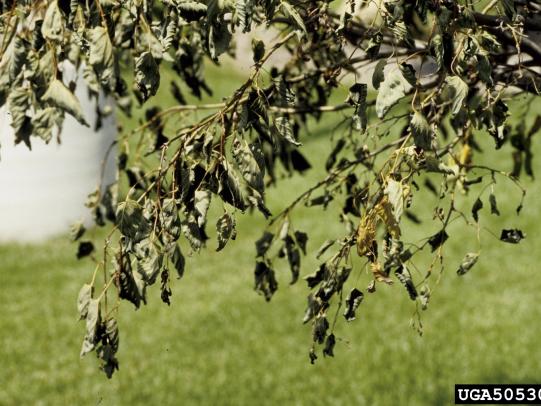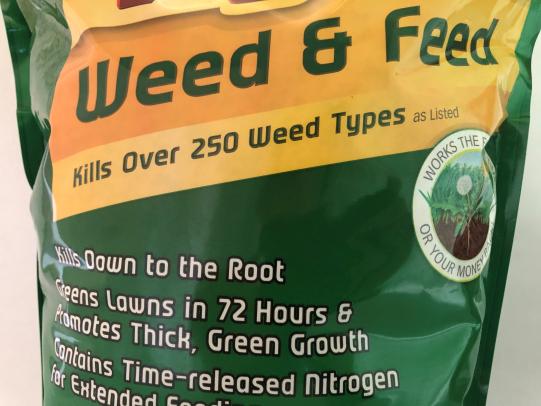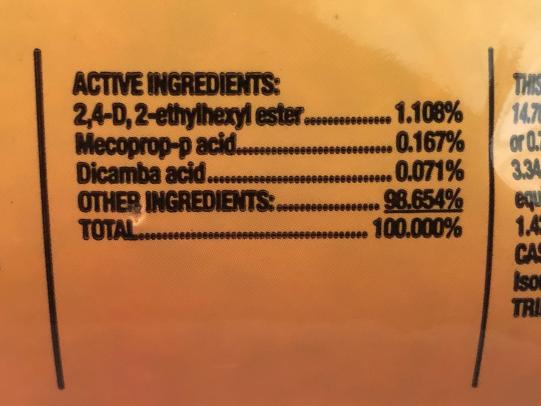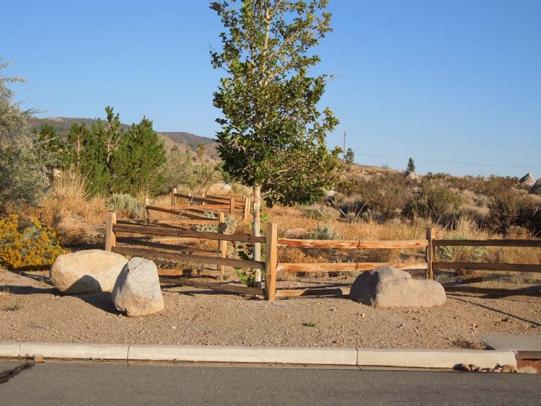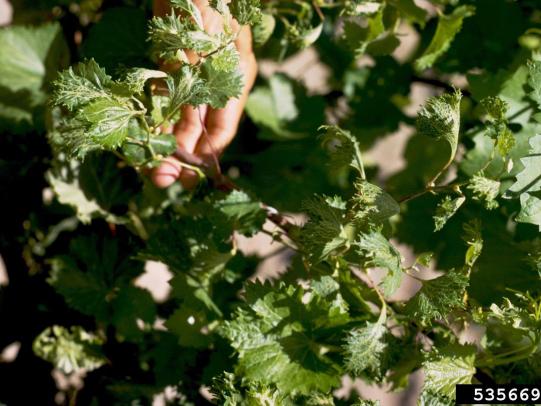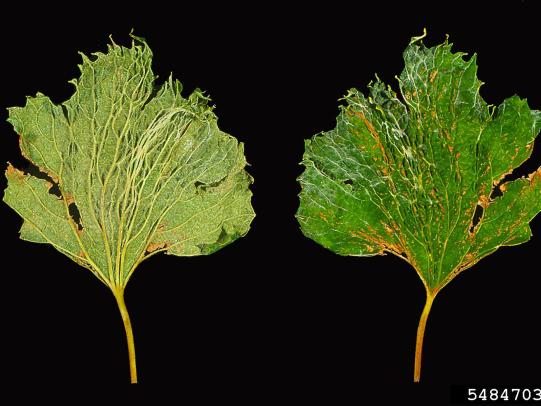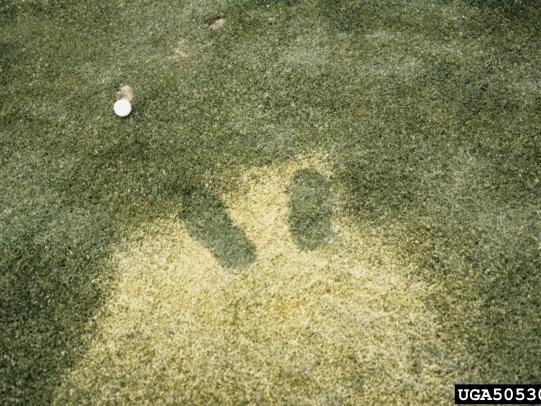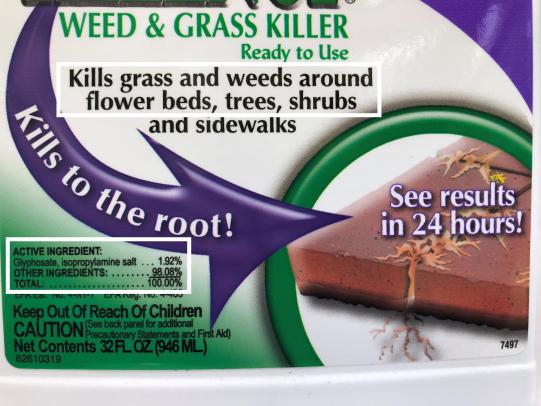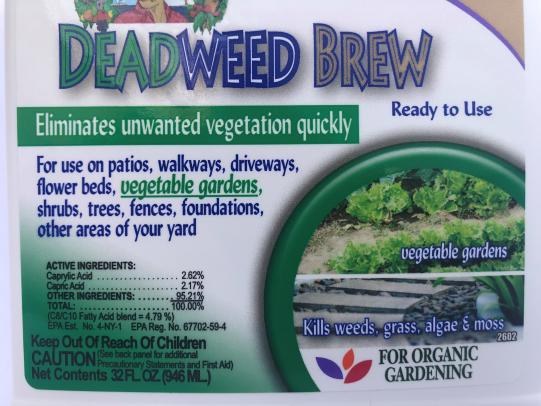COMPRENDER LAS ETIQUETAS DE LOS HERBICIDAS PARA PROTEGER las plantas no deseadas
La foto muestra el daño causado por los herbicidas a un árbol junto a un césped. Los herbicidas (herbicidas) son productos químicos diseñados para matar plantas. Pueden dañar plantas no deseadas en las situaciones descritas en este artículo.
Para evitar dañar las plantas no deseadas con herbicidas:
- Utilice la información proporcionada en las etiquetas de los productos para comprender los riesgos de un producto para las plantas no deseadas.
- Siga las instrucciones para minimizar los riesgos. Seguir las instrucciones también le ayudará a maximizar los beneficios del producto.
Ir a
- Daños causados por herbicidas a árboles y plantas Arbustos (matorrales) cerca del césped
- Daños causados por el vapor de herbicidas durante el clima cálido
- Daños causados por herbicidas en el césped
- Lo que dicen las etiquetas y Qué significa esto para las plantas no objetivo
PARA PREGUNTAS SOBRE PESTICIDAS
El Centro Nacional de Información sobre Pesticidas (NPIC) puede responder preguntas sobre productos químicos para el control de plagas.
1-800-858-7378 o npic@ace.orst.edu
Herbicida 2,4-D e ingredientes similares para césped
- Los productos herbicidas específicos para césped con el ingrediente activo 2,4-D e ingredientes similares eliminan el diente de león y otras malezas de hoja ancha (tallos y hojas suaves). No dañan el césped cuando se usan según las instrucciones.
- Los ingredientes herbicidas específicos para césped también pueden dañar las plantas cercanas deseadas si las raíces se extienden hacia el área del césped.
- Si las raíces de árboles o arbustos se extienden debajo de su césped, evite usar productos con 2,4-D en la zona de raíces de las plantas deseadas.
- Siga las instrucciones de la etiqueta para evitar dañar las raíces de árboles y arbustos.
Herbicida y fertilizante (herbicida y fertilizante)
- Los productos de herbicida y fertilizante combinan herbicidas y fertilizantes en el mismo envase. Están pensados para su uso en céspedes. La foto (centro) de arriba muestra un ejemplo de etiqueta de producto de herbicida y fertilizante.
- Los productos de herbicida y fertilizante suelen contener el herbicida 2,4-D o ingredientes similares, como se muestra en la foto de arriba (derecha).
- Si las raíces de árboles o arbustos se extienden debajo de su césped, evite usar herbicida y fertilizante en la zona de raíces de las plantas deseadas.
Métodos recomendados para las malezas en céspedes cerca de árboles y arbustos
- Arranque a mano o pulverice las malezas según sea necesario.
- Aplique semillas de césped o productos para parches de césped en las áreas donde desentierra las malezas.
2,4-D, triclopir y otros ingredientes similares
- Algunos productos herbicidas con 2,4-D y triclopir (formulaciones de éster) se convierten en vapor cuando se aplican en días calurosos.
- Las altas temperaturas y la baja humedad aumentan la vaporización (los productos químicos se convierten en gases).
- El vapor puede dañar las plantas cercanas. Revise la etiqueta para conocer los límites de temperatura.
Glifosato y otros herbicidas no selectivos
- Los productos herbicidas con el ingrediente activo glifosato dañarán la mayoría de los pastos y plantas de hoja ancha. No permita que el rocío entre en contacto con las plantas que desea conservar.
- El glifosato es un herbicida no selectivo. Mata a la mayoría de las plantas.
- Los herbicidas de amplio espectro son útiles para áreas como patios, senderos, caminos de acceso y cercas.
- Algunos herbicidas no selectivos incluso se pueden usar cerca de frutas, verduras, flores, árboles y arbustos, pero solo si la etiqueta lo indica.
- No permita que el rocío entre en contacto con las plantas que desea conservar. El herbicida las dañará.
Los ingredientes de los herbicidas no selectivos incluyen:
- Glifosato
- Imazapir
- Dibromuro de diquat
- Los herbicidas de contacto dañarán las hojas y los tallos con los que entren en contacto directamente. Los herbicidas de contacto no matan las raíces de las plantas con las que entran en contacto.
Más información sobre herbicidas orgánicos
- Los herbicidas orgánicos son útiles para matar las plántulas de diente de león y otras malezas. No matan las plantas de diente de león establecidas en una sola aplicación. Siga las instrucciones de la etiqueta para obtener mejores resultados.
- Los herbicidas orgánicos se consideran herbicidas de “contacto”. Dañan el tejido de la planta que entra en contacto directo con el rocío.
- Los herbicidas orgánicos dañan las hierbas de los céspedes. Las hierbas se volverán amarillas por un tiempo, pero probablemente no morirán.
Para céspedes
- Los herbicidas no selectivos dañarán el césped y no deben usarse para rociar las malezas en áreas específicas del césped a menos que planee volver a sembrar o aplicar parches de césped.
- Se pueden utilizar herbicidas no selectivos para renovar el césped. Consulte Establecimiento y renovación práctica del césped (OSU Extension Service).
- Muchos herbicidas pueden ser perjudiciales para las plantas cercanas que no son el objetivo. Algunos evitarán que las plantas crezcan en las áreas tratadas durante meses.
- Busque las INSTRUCCIONES DE USO. Pueden estar dentro de un folleto o panfleto.
- Siga las instrucciones atentamente para minimizar los riesgos para las plantas que no son el objetivo.
Lo que dice la etiqueta: “No lo use antes de plantar césped, flores u otras plantas porque este producto permanece activo en el suelo hasta por un año”.
Lo que eso significa: Esto a menudo se llama una “restricción de plantación posterior”. Significa que no puede esperar que las plantas prosperen en las áreas tratadas hasta que haya pasado un período de tiempo. Estos productos están destinados a usarse en lugares donde no se desean plantas, como caminos de acceso.
Lo que dice la etiqueta: “No recoja los recortes de césped para utilizarlos como mantillo o abono. No envíe los recortes a una planta de compostaje”.
Lo que significa: Esto suele denominarse “restricción de compostaje”. Significa que el producto puede permanecer activo, incluso después del compostaje. Hay personas que han dañado sus jardines al utilizar abono con trazas de los ingredientes activos clopiralida y aminopiralida, en particular.
Para obtener más información, consulte Mezcla de tierra y abono contaminado con herbicidas: lo que debe saber y lo que puede hacer al respecto (OSU Extension Service).
Lo que dice la etiqueta: “En condiciones que favorecen la evaporación (temperaturas altas y baja humedad), los vapores de este producto pueden dañar los cultivos susceptibles cercanos”.
Lo que eso significa: Inmediatamente después de la pulverización, e incluso días después, este producto puede evaporarse de las superficies tratadas. Si el viento no se lleva los vapores, pueden permanecer en el aire y dañar las plantas cercanas. A menudo, las uvas, las flores y las plantas vegetales son muy sensibles a los vapores.
Lo que dice la etiqueta: “No aplique este producto en áreas donde las raíces de plantas deseables puedan extenderse a menos que se pueda tolerar el daño. Las zonas de raíces pueden extenderse mucho más allá de la copa del árbol”.
Lo que eso significa: Al intentar controlar las malezas, es posible dañar los árboles y arbustos. En La Pine, Oregon, varios árboles murieron después de que las primeras lluvias de octubre arrastraran los residuos de herbicidas desde la superficie hasta las zonas de raíces de los árboles.
Contenido proporcionado por Weston Miller y Kaci Buhl.
Revisión por pares realizada por el Departamento de Horticultura de la OSU.
Herbicidas y Referencias de plantas no objetivo
Síntomas de herbicidas en plantas
Centro Nacional de Información sobre Pesticidas
Mezcla de tierra y abono contaminado con herbicidas: lo que debe saber y lo que puede hacer al respecto
Universidad Estatal de Oregón
